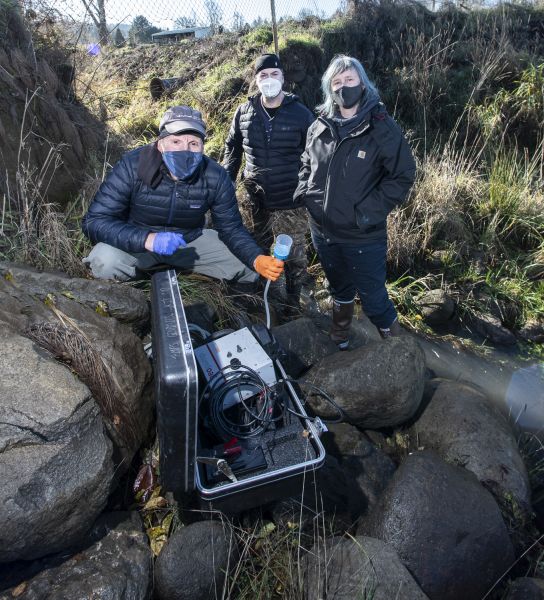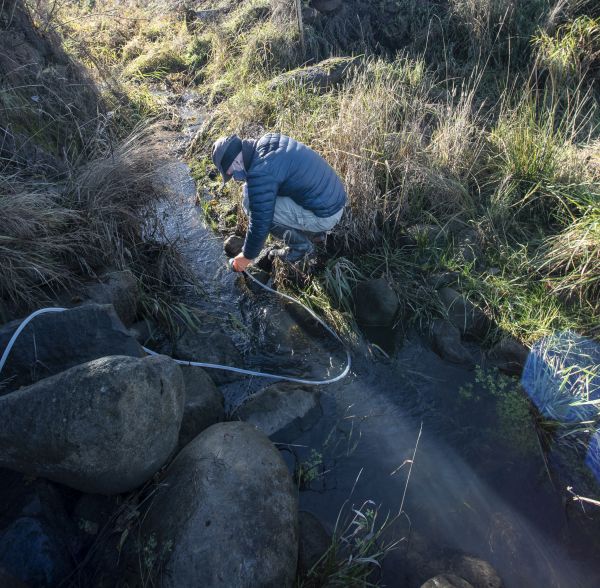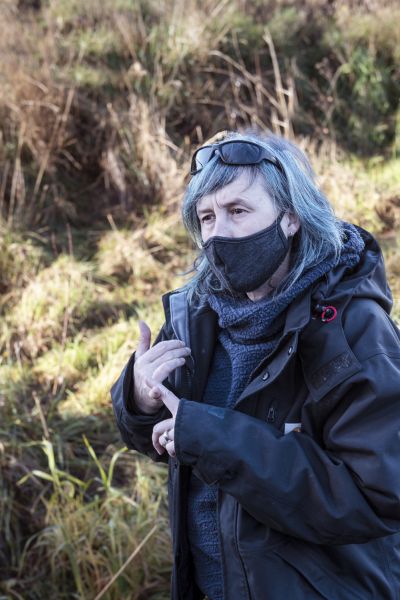Photos by Bruce MacGregor
While DNA testing has most often been used to solve crimes or locate distant cousins, it now helps answer an important stream restoration question.
Determining if a specific fish species is found in a small stream is difficult. The usual techniques are snorkel surveys and electrofishing. Both techniques rely on visual identification, but fish can hide well! Electrofishing can also cause damage or even death. Environmental DNA—eDNA—is a method to identify the presence of a species by testing for its DNA. Fish constantly shed their DNA, whether it be from their scales as they brush against cobbles or gravel, their feces, or their carcass.

The DNA from a specific species is unlikely to be captured in a cupful of water, so sampling protocol requires five liters. A special pump draws stream water through a filter fine enough to trap DNA and other detritus. The filter is then sent to a laboratory where the DNA is sequenced and compared against known reference samples.
Johnson Creek Watershed Council is using eDNA to determine if target species have traveled through sites—and currently reside upstream–of fish passage barriers we have fixed. If we receive a match, we know those species have made it above the old barriers. This is a good way to confirm that the project is a long-term success. Even if a stream reach is passable by salmon or other target species, they may naturally be absent upstream at certain times of year. For this reason we will be testing twice a year: in late fall and in the spring.

Our four target species are coho salmon, chinook salmon, Pacific lamprey, and steelhead/rainbow trout. We first tested out the eDNA methodology in October, 2018, and confirmed the presence of coho salmon above the 2016 culvert replacement project we completed on Badger Creek under the Springwater Trail. We also confirmed that coho were not present upstream of several projects we had planned and have since completed.
On December 1st, JCWC staff members Chuck Lobdell and Daniel Newberry were trained in the use of the eDNA sampling equipment by Melissa Brown, Fisheries Biologist with Portland Bureau of Environmental Services. During the training, the team collected samples at recent restoration sites on Mitchell & Kelley Creeks. Chuck and Daniel collected additional samples a few days later at project sites on North Fork Johnson and Badger Creeks.

Melissa has used eDNA testing for several years to determine if these target species can navigate Crystal Springs Creek, where the Bureau of Environmental Services addressed nine fish passage barriers. To learn more about her early results, check out her presentation at the 2018 Johnson Creek Science Symposium.
We will share the results as soon as we receive them from the U.S. Forest Service laboratory in Missoula, Montana.
